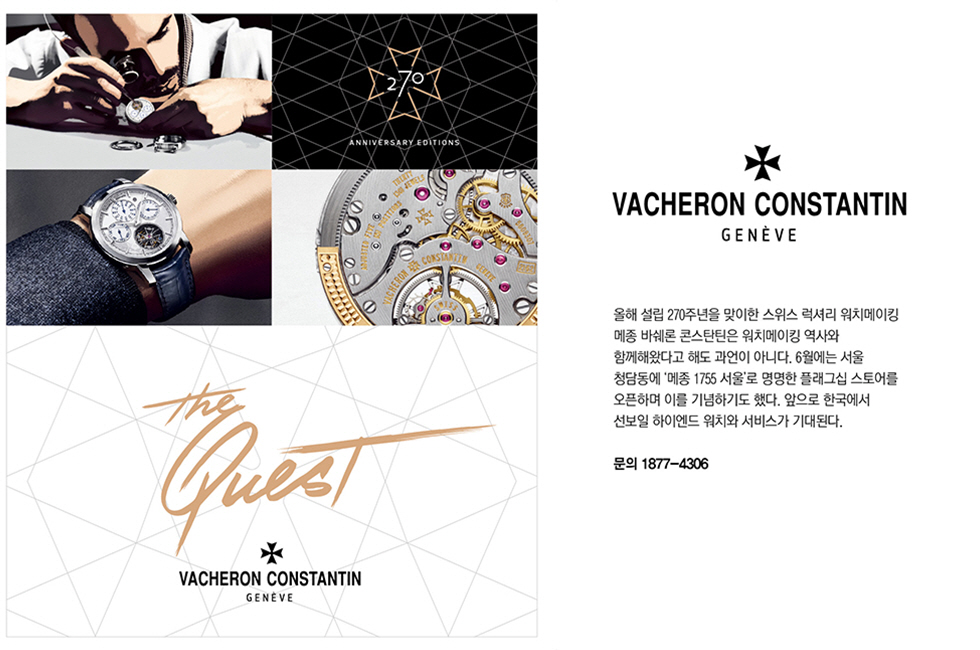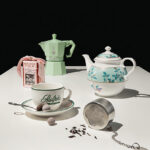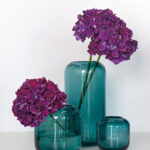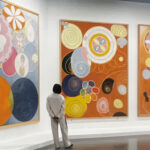interview with_Maggi Hambling
영국 원로 작가 매기 햄블링은 미술이 성 정체성에 따라 규정되는 것을 거부한다. 그저 현재에 충실하며 현실에서 벌어지는 일에 집중하고자 한다. 잉글랜드 서퍽에 자리 잡은 그녀의 작업실에서 1960년대 런던의 문화적 번영기에 태동한 퀴어 문화, 프랜시스 베이컨과의 만남, 그리고 평생 동안 매료돼온 오스카 와일드와 바다에 대한 이야기를 들었다.
Maggi Hambling refuses to be categorized by her sexual orientation. Rather, she strives to live in the moment, responding to what’s happening in life. During an interview at her studio in Suffolk, England, she talks about the queer art scene in London’s “Swinging Sixties,” her encounter with Francis Bacon, and her life-long fascination with Oscar Wilde and sea waves.
2 애연가이자 열렬한 흡연권(吸煙權) 옹호자인 햄블링은 언제나 오른손에 담배를 든 채 강렬한 눈빛으로 응시하는, 그녀 특유의 포즈를 취한다. Photo by Jack Lee
3 서퍽에 위치한 햄블링의 작업실 내부. 그녀의 조각 작품이 주로 놓여 있는 공간이다. Photo by Jack Lee
4 ‘Edge VI’(2016), oil on canvas, 121.92×91.44cm. Photo by Douglas Atfield ©Maggi Hambling
5 ‘Wall of water, Amy Winehouse’(2011), oil on canvas, 91.44×121.92cm. Photo by Douglas Atfield ⓒMaggi Hambling
6 Portrait of Henrietta Moraes(1998), charcoal on paper, 60.9×48.2cm. Photo by Douglas Atfield ⓒMaggi Hambling
7 서퍽에 있는 햄블링의 작업실은 원래 건초 헛간으로 쓰이던 곳으로, 자연에 둘러싸여 있다. Photo by Jack Lee
8 역동적인 감성이 돋보이는 햄블링의 ‘파도’ 시리즈가 서퍽 스튜디오에 걸려 있다. Photo by Jack Lee
Hambling said she was fortunate to have spent her school years in a liberal environment, where smoking and homosexuality were not so taboo. Her progressive upbringing braved her to venture discovering her sexual identity. When she began as a student of Camberwell School of Arts in London at the age of 19, she decided to conduct a social experiment to test her sexuality. She decided she would meet four different partners ? an older male, a younger male, a black man, and a female. “I decided I prefer a lady. I tried everything to see,” Hambling said. “It was a shopping list that I had to get through to find what I like. It’s very sensible, isn’t it?” She continued on to spend the culturally vibrant “Swinging Sixties” in London as an art student. The mid-to-late 1960s ushered in a youth-driven cultural boom symbolized by sexual liberation, anti-nuclear campaigns, and a culture of free-spirited experimentalism. She referred to the art world at that time period as being characterized by “parties, Francis Bacon, and David Hockney.” Hambling had a personal encounter with Bacon at an art studio in Ipswich, Suffolk that belonged to her teacher Arthur Lett-Haines. Bacon happened to visit the place where Hambling was showcasing her painting depicting a drag queen. “He stood in front of it and talked to me about it. But I can’t remember what he said and I was too shy to speak. And I didn’t say anything. He went downstairs and asked, ‘Is that girl deaf and dumb?’” Bacon and Hambling also shared a muse in Henrietta Moraes, dubbed “Queen of Soho.” The model and a friend of Bacon later became Hambling’s lover.
“My mother was the first person I drew in the coffin. And she had been quite ill at the end of her life and all the pain had gone out of her face. She looked sort of serene. My father looked quite serene as well. Henrietta looked furious, absolutely furious,” she said. Many viewers have found her portraits odd or surprising, but Hambling thought it was a privilege for her to grieve someone who was close to her in her own unique way, just like musicians compose music and poets make poetry for the passing of loved ones. The process helps her cope with the pain and emptiness that follows death, she said. Apart from her close friends and family, Hambling made a commemorative sculpture for playwright Oscar Wilde, who, she said, had a great impact on her life. She was gripped by his stories since she was as young as seven years old. Some forty decades later, she created the sculpture of Wilde and named it, “A Conversation with Oscar Wilde,” hoping passersby would sit on it and converse with one of the greatest writers in English literature. When asked what she would say to him if he ever came back to life, she responded: “I would keep quiet because he is one of the best conversationalists ever been. I would let him talk.”
햄블링은 나이가 들수록 말하는 것보다 듣는 게 더 좋다고 했다. “겨우 서너 살 됐을 때, 바닷가에 나가면 바다가 마치 제 친구인 듯 말을 걸곤 했어요. 이제 나이가 좀 드니까 반대로 바다가 제게 하는 말을 듣고 있어요.” 2002년부터 역동적인 감성이 돋보이는 파도 시리즈를 선보이고 있는데, 이는 어린 시절부터 자주 찾아가던 해변가에서 접해온 바다의 모습에서 영감을 받은 것이다. 그녀에게 파도는 ‘삶의 순환’을 의미한다. “무섭지만 아름답잖아요. 파도가 해변가로 돌아오며 부서지는 모습, 다시 올라가고, 다시 돌아오는.” 햄블링의 파도 시리즈는 극지의 만년설이 녹아내리는 모습을 담은 그녀의 최근작 시리즈로 자연스럽게 옮겨 가는 계기가 됐다. 전 지구적 차원의 환경문제를 상징하는 ‘만년설’ 시리즈는 지난 3월 그녀가 20년 동안 전속 작가로 함께해온 런던의 말보로 파인 아트(Marlborough Fine Art) 갤러리에서 열린 개인전에서도 선보였다. 이 전시에서는 최근 대두되고 있는 난민 위기나 중동 분쟁 등 국제 이슈를 다룬 작품도 공개됐다. 오랫동안 다룬 지극히 개인적인 내면 세계에 관한 주제에서 정치적인 주제로 옮겨 간 계기가 궁금했다. “아티스트는 삶에서 일어나고 있는 일에 반응해야 한다고 생각해요.” 그렇다면 무섭도록 빠르게 변화하는 세계정세와 삶 속에서 현재 그녀가 가장 관심을 쏟는 이슈는 무엇이고, 작품에는 어떻게 반영하고 있을까? 그녀는 자세하게 얘기하기를 꺼렸다. 작업에 대한 내용을 너무 많이 공개하면 운이 나빠진다고 장난스레 대답하면서. 그런데도 자신에게 6개월 뒤에는 무슨 그림을 그릴 거냐고 파고드는 사람들이 있다면서 그들을 향해 이렇게 일갈했다. “나도 잘 몰라요! 나는 점쟁이가 아니라고요.” 아마도 ‘현재’에 집중하는 태도야말로 햄블링이 자신의 삶에서 예리함과 열정을 유지하는 비결일지도 모르겠다. 글 이우영(미술 기고가)
Now that she is growing older, Hambling says she prefers to listen rather than talk. “When I was a toddler, three or four, I used to walk into the sea and talk to the sea as if it was my friend. Now, a little bit older, I listen,” she said. Since 2002, she has been painting expressive sea canvases, inspired by the seaside scenes she has been observing since childhood. She likens the sea waves to “a cycle of life.” “It’s terrifying, but beautiful. This sort of return of waves crashing down, going up against, returning again,” she said. Her paintings of the sea has led her to create a new painting depicting melting icecaps that addresses current environmental concerns. Her latest paintings, showcased in March at Marlborough Fine Art gallery in London, explored global issues such as the global refugee crisis and conflicts ? a rather political shift from her previous studies depicting personal subjects. When asked what prompted her to shift her subject focus, Hambling said, “I think an artist has to respond to what happens in life.” So, what artistic subjects are intriguing her at this moment? She hesitated to give details, saying it’s a bad luck to talk about what she’s been working on. She did, however, mention there are people who ask her what is she going to paint in the six months and exclaimed: “I don’t know! I’m not a fortuneteller.” Living in the moment may be what keeps Hambling sharp and passionate to this day. by Wooyoung Lee (art writer)
[QUEER ART SPECIAL]
– Defying Categorization 기사 보러 가기
– Queer Art Now 기사 보러 가기
– LGBTQ 현대미술, 역사적 전개와 그 이후 기사 보러 가기























